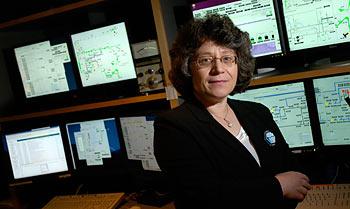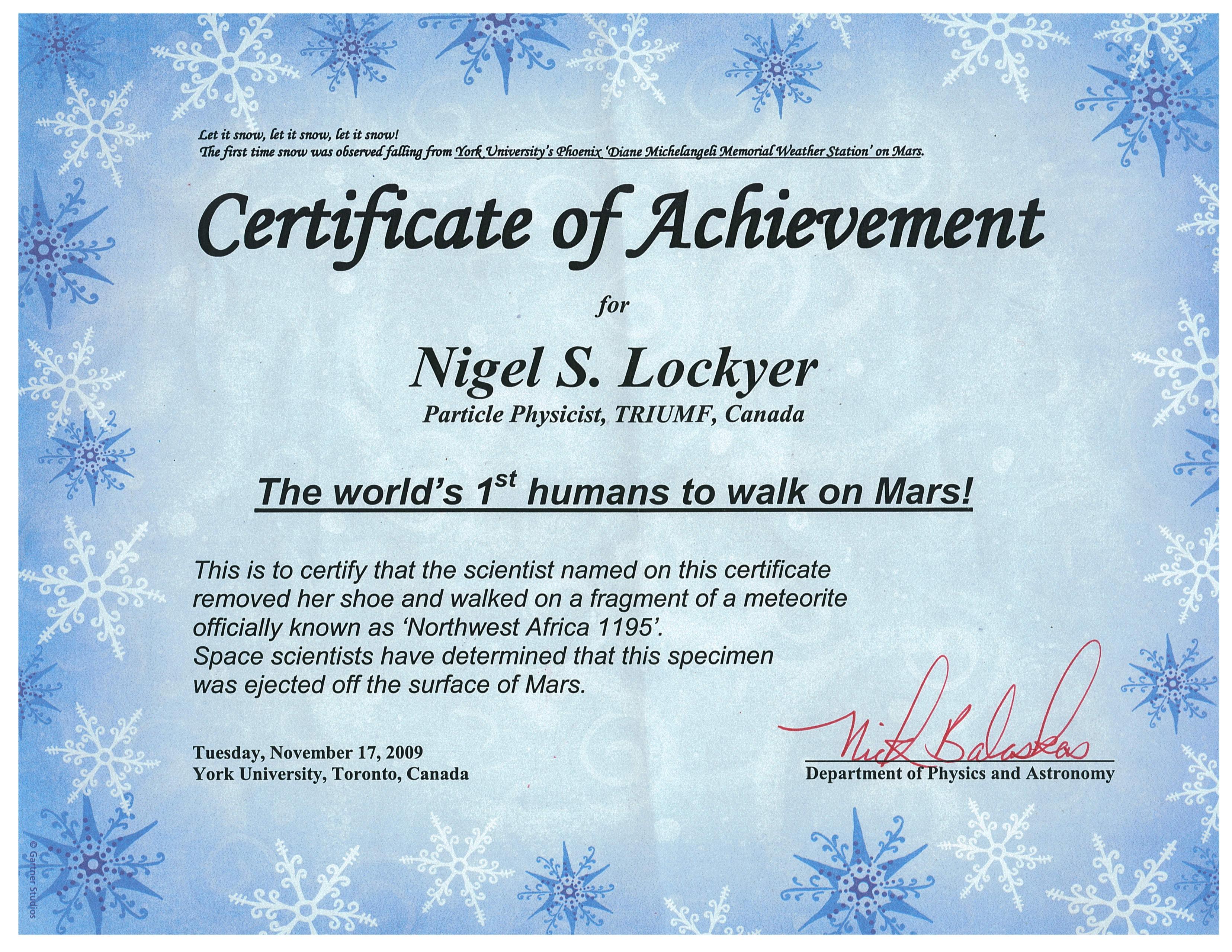 |
In mid-November, Dr. Lia Merminga, Head of TRIUMF's Accelerator Division, set-out for Ontario to begin a series of colloquia on the state of accelerator science in Canada. For this trip, Merminga was invited to speak at both York University and the University of Toronto (U of T).
Particle accelerators enable scientific discoveries in a broad range of disciplines including particle and nuclear physics, condensed matter physics, materials science, biology and chemistry, and have found ever expanding applications in medicine, industry, energy and security. Today particle accelerators are being used for an increasing number of applications that impact not only fundamental research but the everyday lives of Canadians and the world. Virtually all electronics, from cell phones, computers, and game stations, to PDAs and MP3 players, contain modern integrated circuit chips produced using ion implantation with an accelerator. Even the shrink wrap that keeps food fresh is produced using accelerators. By some counts, there are more than 17,000 particle accelerators in use today around the world, even when using a fairly narrow definition of the term.
Behind all of these applications and the accelerators themselves is the discipline of accelerator science, a growing and important field around the world. Merminga's colloquia stressed the importance of accelerator-science education, an area in which the Canadian post-secondary education system is lacking, as no formal discipline in accelerator science has been established. "The physics of accelerators is a field of science in its own right, with active scientific research ranging from studies of fundamental physical phenomena to their implementation in state-of-the-art facilities," explained Merminga. "It is vital that Canadian universities embrace accelerator science as a formal discipline within physics departments. By training the next generation of accelerator physicists, we will ensure Canada's role as an international leader in this field which has ever-expanding potential to benefit the everyday workings of society as well as to help us probe the fundamental questions about our universe."
To advance accelerator science and technology education in Canada, TRIUMF has committed itself to forming strong partnerships between the laboratory and its Canadian member universities. Such partnerships now exist between TRIUMF, the University of British Columbia, and the University of Victoria, where scientists, researchers, professors, and university administration are collaborating to establish graduate level courses in accelerator science. During her presentation, Merminga emphasized the value of both curriculum and research in developing a sound education in accelerator science. By collaborating with TRIUMF, universities can open the door for their students to opportunities to conduct research in a laboratory setting as well as to learn from world-class lecturers in the classroom.
"It was fantastic to see so many undergraduates in the audiences at York University and U of T," remarked Dr. Nigel Lockyer, Director of TRIUMF, who accompanied Merminga. "These are the faces of the new generation of accelerator physics - their interest and support is what will fuel the development of accelerator science as a discipline in Canada. it was also good to see so many of the students and faculty who listened to Lia's talk stay afterwards to ask questions."
Merminga's talk also highlighted the operating infrastructure which already exists in Canada to support and enable accelerator science education and continuing research and development. She reviewed currently operating Canadian accelerators, including TRIUMF's 500MeV Cyclotron and the ISAC Rare Isotope Beam facility, and the Canadian Light Source in Saskatoon. Both sites provide areas for research as well as access to world-renowned experts in accelerator science. In addition, Merminga also reviewed present plans to build a state-of-the-art superconducting radio-frequency electron linear accelerator (e-Linac) at TRIUMF and the new physics initiatives it will enable.
 | |
| Certificate of Achievement officially stating that Nigel S. Lockyer, Director of TRIUMF, was one of the world's first humans to walk on Mars. |
Between presentations, Lockyer and Merminga met with partners at York and UofT to discuss future collaboration on accelerator projects. Presently, TRIUMF is working on developments in superconducting RF technology with the U of T and is discussing the development of a future accelerator-based source of Terahertz radiation for next-generation materials imaging in Canada. The continuation of strong partnerships such as these is fundamental to the future of accelerator science in Canada.
On a side note, Merminga and Lockyer had an interesting diversion during their trip. As they were walking down a hallway at York University - which leads the Canadian Meteorological Station on NASA's Phoenix Mars Lander - a professor invited them to be the world's first humans to "walk on Mars." They both willingly obliged, curious to see what this was all about. That afternoon, Lockyer and Merminga became two of the first humans to "walk on Mars" as they removed their shoes and walked on a fragment of a meteorite officially known as 'Northwest Africa 1195' which space scientists have determined was ejected off the surface of Mars. After their "space walk" they both came back to TRIUMF with certificates to prove it!
For more information on accelerators and their applications, visit Symmetry Magazine
-- Meghan Magee, Communications Assistant
